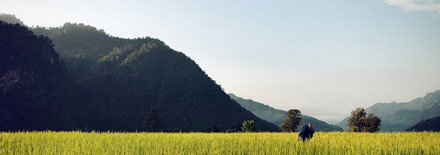
First year Massey University students are coming to the aid of Nepal’s Gorkha people as part of an engineering course with a distinctly global outlook.
Sixteen teams of four to five students are working on projects ranging from water filtration systems to promoting hygiene; from better sanitation methods, improved cooking, housing and ventilation systems.
Their design solutions have to be creative to overcome limited resources in the Gorkha region. That means working with materials as novel as bamboo and coconut fibre, readily available in these communities.
One team researched and found an unusual seed, which when crushed and added to water significantly clears the liquid.
The students are partnering with Engineers Without Borders (EWB), which is working with Nepal Water for Health.
“The course conveys a powerful message of applying engineering skills to improve current conditions and of doing good and contributing to improving the lives of people whose lifestyles are different to their own,” says senior lecturer in product development Aruna Shekar. “The students learn to consider affordability, resource optimisation, impact on the environment and simplifying designs for ease of assembly.”
Massey University teams have won the EWB competition nationally twice in a row and will compete in this year’s finals on 12 June internally before competing nationally later in the year.
The students who do well are those who genuinely care about the problems they’re solving on behalf of the Nepalese villagers, says Shekar. “They truly empathise with the users and have done their homework about the context and the stakeholders. Many have contacted local representatives from the country to gain first-hand knowledge or corresponded with the partner NGO through the EWB website and community forum.
“They learn that a project can have multiple stakeholders and that the needs of different groups must be considered. They also learn to appreciate that a solution does not necessarily have to be complex in order to serve a need or have a huge impact. They understand the importance of the quadruple bottom line design thinking – economic, environment, social and cultural dimensions.”




